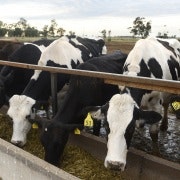The frozen fund Challenger
Nearly two years after $25 billion of mainly retirees' funds was frozen in the mortgage trust sector Challenger Financial has become the first of the managers to propose a restructuring of its flagship trust and beginning the process of normalising it.
The whole sector was locked up in October 2008 after the federal government guarantee of bank deposits threatened to ignite a run on the trusts that would have spiralled into forced liquidations of their assets and inevitably large losses for the investors. Since then only limited withdrawals have been allowed.
Challenger's Howard Mortgage Fund, one of the older and larger property funds, has had quarterly windows, with aggregate caps, for redemptions and has returned about $580 million to its investors since October 2008. Interestingly, it has made $870 million of liquidity available for redemptions – a significant proportion of its investors have been comfortable leaving their money in the fund.
Despite the withdrawals the $2.3 billion fund (it was a $2.8 billion fund in 2008) has, in common with its larger peers, been building up liquidity. While that has eased any pressure on the funds to liquidate their asset bases prematurely (and preserved funds under management and therefore fee income for their managers) it has come at a cost to the investors.
The Howard fund has been returning only 3.5 per cent to its investors rather than its traditional premium over the cash rate because it was sitting on cash rather than lending it.
Challenger has decided to sacrifice some management fees and, hopefully, add some brand value, by becoming the first of the big trusts to fundamentally restructure and return substantial funds to its investors.
Under its proposal, which will be put to its unitholders next month, it will offer to return up to $850 million. Investors with balances of $10,000 or less will be able to withdraw the full amount immediately, with the same offer to be made annually. The remaining $700 million will be subject to a scaling back if demand exceeds the amount of cash available. The fund will then make at least 10 per cent of its asset available to unitholders for withdrawal each quarter.
Based on its experience of the past two years Challenger doesn't expect the full amount to be called on but in any event has sufficient liquidity to be able to manage the funding of the withdrawals and a resumption of lending.
With credit quality concerns declining as the economy continues to roll along, and bank funding for commercial property limited, Challenger sees opportunities to grab unusually large spreads by resuming lending.
That would then enable it to offer better returns to unitholders and, it hopes, attract new investors in a virtuous cycle that would gradually normalise the fund.
If Challenger's restructuring is successful, the combination of the demonstration effect and its enhanced competitiveness because of the improved returns would exert enormous pressure on other managers to emulate it and start releasing larger proportions of the excess liquidity they are holding. Its move could force the entire sector to start putting the crisis behind it.















